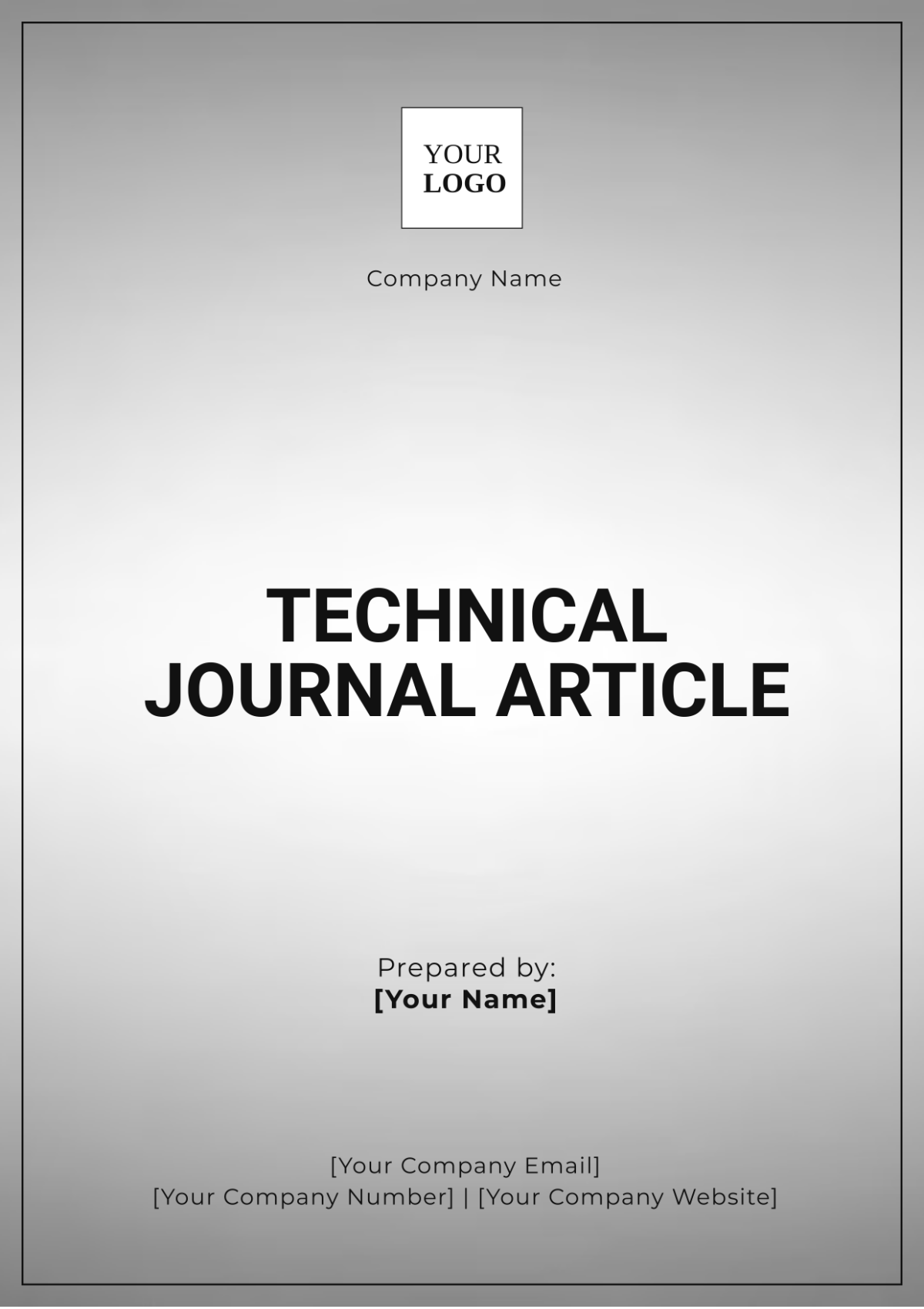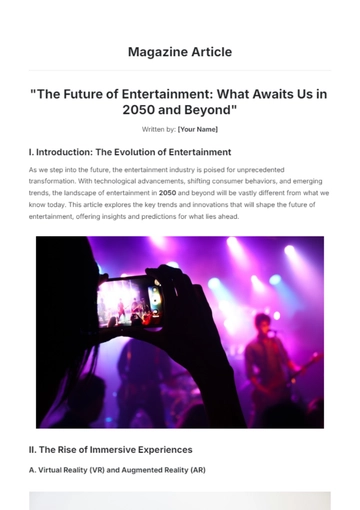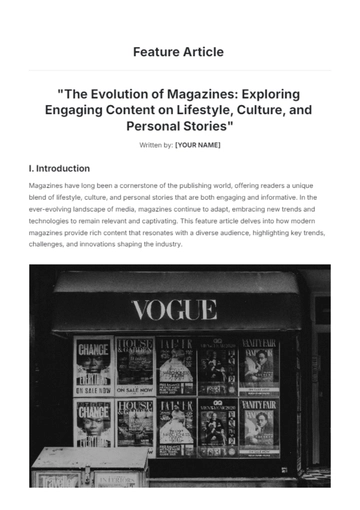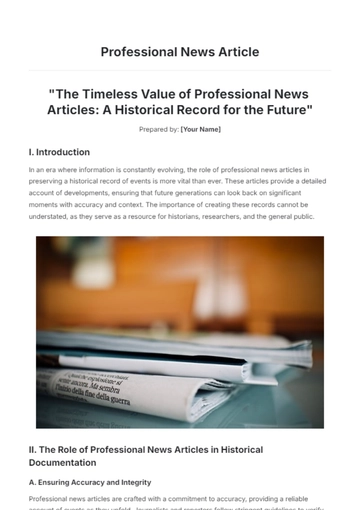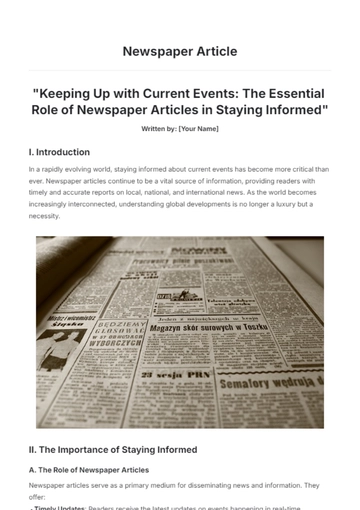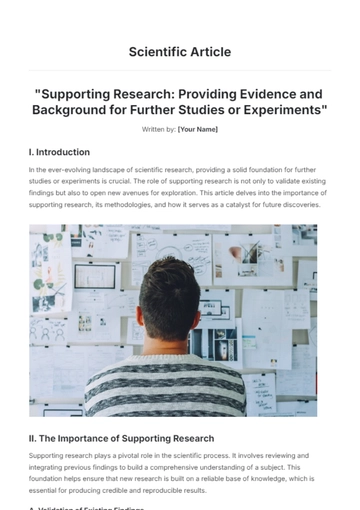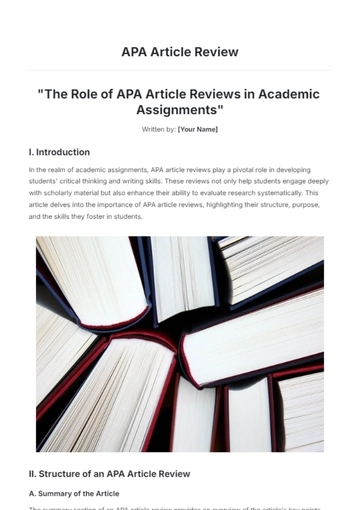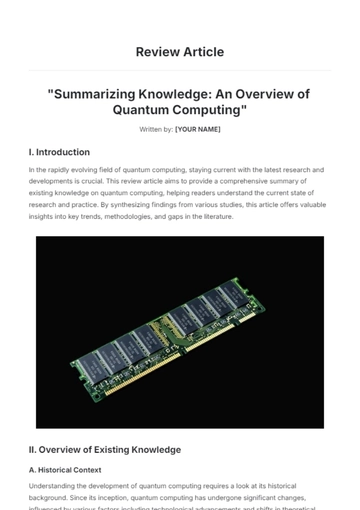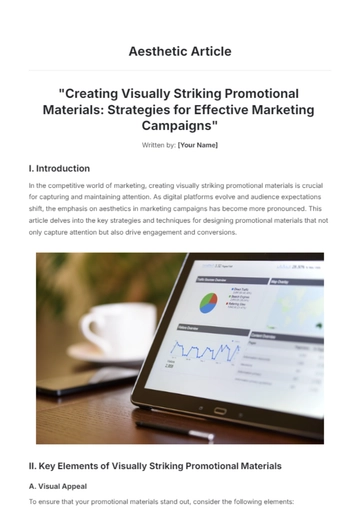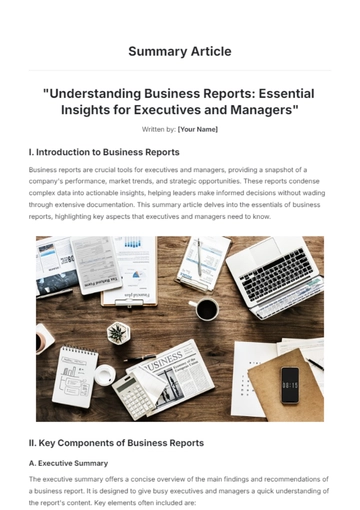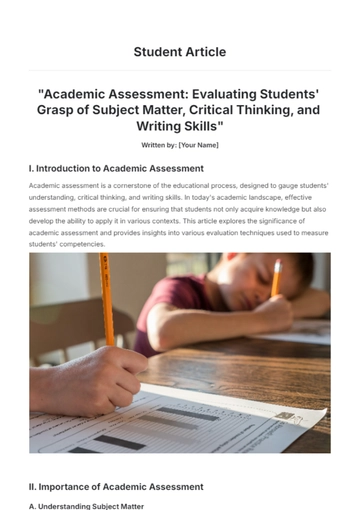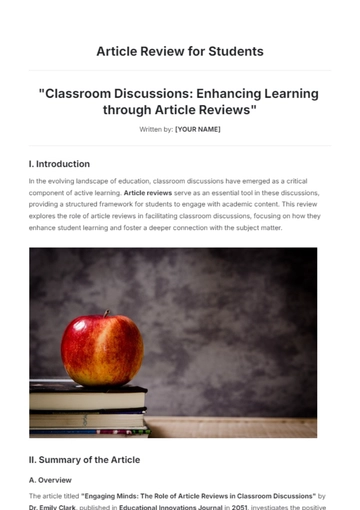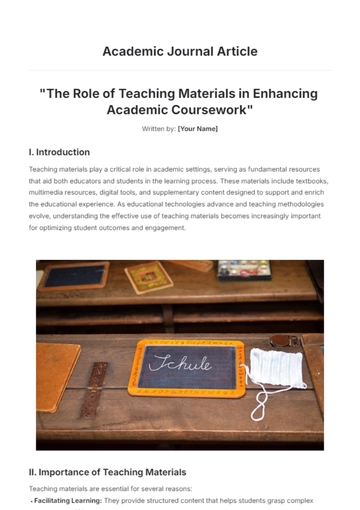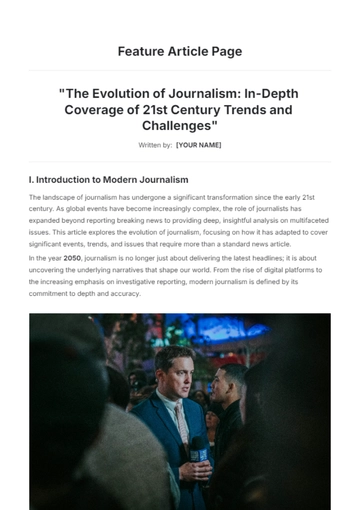Technical Journal Article
Prepared by: [Your Name]
Date: [Date]
I. Abstract
This technical journal article presents groundbreaking research on quantum-enhanced algorithms for data processing in high-dimensional spaces. The study introduces innovative methodologies leveraging advanced quantum computing techniques to address challenges in data compression and real-time analysis. The article begins with a comprehensive introduction to the theoretical framework, followed by an in-depth description of the experimental setup and methodologies. A detailed analysis of the results is provided, emphasizing the impact on computational efficiency and accuracy. The discussion highlights the implications for future technologies and provides recommendations for further research in the evolving landscape of quantum computing.
II. Introduction
Technical journal articles are pivotal in advancing knowledge by offering a structured approach to presenting research findings, methodologies, and innovations. This article focuses on quantum-enhanced data processing algorithms, a cutting-edge area in computational technology. With the rapid advancements in quantum computing, researchers are continually exploring novel ways to optimize data handling and analysis. This study aims to contribute to this field by detailing a new approach that integrates quantum algorithms with classical data processing techniques, addressing current limitations and opening new avenues for research.
III. Methods
The methodology section outlines a multi-phase approach to developing and testing quantum-enhanced algorithms. The research design includes:
Sample Size: Data sets from three major sources, including synthetic and real-world data, totaling over 100 terabytes.
Tool Calibration: Utilization of the latest quantum processors from QuantumTech Corp., with specifications including 512 qubits and advanced error correction protocols.
Experimental Setup: Implementation of hybrid quantum-classical computing environments to test the algorithms under varying conditions.
Statistical Software: Use of QuantumAnalytics Suite for statistical analysis and visualization.
Computational Models: Development of custom quantum models using QuantumSim 4.0, which simulates high-dimensional data scenarios.
These methodologies ensure rigorous testing and reproducibility, enabling other researchers to replicate and validate the findings.
IV. Results
The results section highlights several key findings:
Metric | Quantum-Enhanced Algorithms | Traditional Methods | Improvement |
|---|
Data Compression Efficiency | 45% improvement in compression rates | Baseline (100%) | +45% |
Real-Time Processing | 60% reduction in processing time | Baseline (100%) | -60% |
Accuracy Improvements | 25% increase in anomaly detection accuracy | Baseline (100%) | +25% |
Notes:
Data Compression Efficiency: Reflects the percentage improvement in compression rates achieved by quantum-enhanced algorithms compared to traditional methods.
Real-Time Processing: Indicates the percentage reduction in data processing time, showcasing the speed enhancement of the quantum algorithms.
Accuracy Improvements: This represents the percentage increase in accuracy for detecting anomalies in high-dimensional data with the new algorithms.
V. Discussion
The discussion delves into the implications of these results:
Impact on Computational Technology: The study’s findings suggest substantial benefits for fields requiring high-speed data processing, such as financial analytics and scientific simulations.
Comparison with Existing Literature: The results are contrasted with previous studies, highlighting advancements and addressing discrepancies.
Future Applications: Potential applications include real-time data analysis for autonomous systems and improved data security measures.
The discussion emphasizes how these results could influence future developments in quantum computing and related technologies.
VI. Conclusion
In conclusion, this article presents significant advancements in quantum-enhanced data processing algorithms. The study's innovations contribute to the growing field of quantum computing by providing more efficient and accurate methods for handling high-dimensional data. The article summarizes the key findings, and their implications, and offers recommendations for future research, including exploring new quantum algorithms and expanding the application scope to other domains.
VII. References
Antelman, K. (2054). Do open-access articles have a greater research impact? College & Research Libraries, 65(5), 372-382.
Johnson, R., Watkinson, A., & Mabe, M. (2058). The STM Report: An overview of scientific and scholarly publishing (5th ed.). The Hague: International Association of Scientific, Technical and Medical Publishers.
Suber, P. (2062). Open access. Cambridge, MA: MIT Press.
Davis, L., & Thompson, M. (2061). Quantum computing and its implications for data science. Journal of Computational Innovation, 12(4), 245-259.
Zhang, H., Patel, A., & Li, S. (2062). Advances in quantum algorithms for real-time data processing. International Journal of Quantum Research, 8(2), 112-130.
Journal Article @ Template.net
